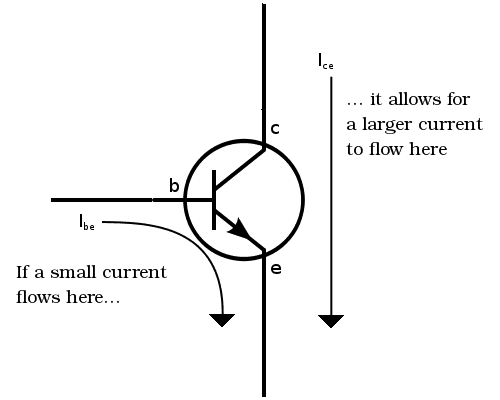
To circumvent it, coils should have a diode across them to short that collapsing voltage. It may not damage them immediately, but all this zapping will age them prematurely. That reverse voltage could potentially zap the driving electronics. It wants to retain that charge and as the field collapses, it generates a fairly large very fast pulse of the opposite polarity (a phenomena called “Back EMF”).ĭepending on the coil, that voltage could be several hundred volts but just a couple of microseconds in duration. If you see a solid ground connection there at all times, that PCM may have an issue.Īn injector is a coil, from an electrical point of view.Ī coil that has a voltage applied to it and then when you turn it off, it fights to sustain its electric field.

On that connection, you should see rapid pulses when the car runs and nothing when the car is not running. I’d try to make sure that wire to the injector has absolutely no short to anything else.
#POWER TRANSISTOR WIRING HARNESS DRIVER#
It sounds like the PCM has a short to ground on that driver or, inside the PCM, whatever drives that driver is active all the time. It turns the pump on but it is not supposed to open the injectors to spray inside the cylinder. That spraying for four seconds is part of the system priming. So - just to clarify - that injector stops spraying when you turn the key off, sprays for four seconds when you turn the ignition on and sprays all the time (no pulses) when the engine is running? If the aluminum were thick enough (say, 1/4”) I think the heat would be distributed over its surface enough not to unduly heat the overlaying carpet.Īnd BTW regarding your polarity question, yes it matters very much which wire goes to which pin on the transistor so to be safe I recommend taking a clear picture of how it’s currently wired and then being careful to always reproduce that exactly.I don’t think people will email you because we’d all be duplicating effort and it will not help people that may have this problem in the future. Someday I will mount it properly perhaps under or behind the passenger seat.)Īnother option would be to mount it, isolated, to a large thick sheet of aluminum which itself is mounted to the forward side of the above steel plate. (My current rig is too big for that so at the moment it is loose on the floor of the passenger footwell. If I wanted to hide it away I would put it forward of that plate but would also mount a small fan on or near the new heatsink to guarantee air circulation, which unfortunately also requires a +12V wire to run the fan.


There is space forward of the passenger footwell closing plate (big piece of maybe.
#POWER TRANSISTOR WIRING HARNESS FULL#
My recollection is the fan motor at full speed conducts 12-15 amps so if that touches ground it will at least produce a healthy spark. The case is connected to the wire to the fan which through the fan leads to +12V. So in putting it on some new heatsink and mounting it elsewhere you need to account for potential unwanted contact. The downside is that the isolation reduces the effectiveness of the heatsink somewhat. IIRC max power dissipation is right before it clicks into the max-speed position.Īlso, with power transistors like this there is always the choice of whether to electrically isolate the heatsink from the transistor case which reduces the chances of the heatsink touching some other circuit with harmful results. That all depends on the fan control-knob position. However, with an inadequate heat sink like the existing one I am pretty sure it would get to plastic-melting, leather-discoloring or passenger-startling temperature. it would self-destruct and either fuse into a short circuit which would simply turn the fan all the way on, or open completely which is the usual failure mode). For the unit to be a fire hazard would exceed the transistor’s heat tolerance (i.e. Click to expand.There are a couple issues here.


 0 kommentar(er)
0 kommentar(er)
